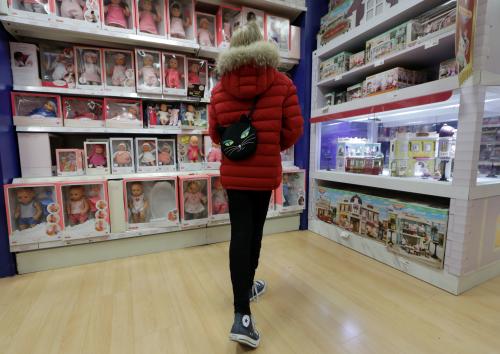It’s the holiday season and store aisles are stocked for a rush of early buying. Stores largely have the pink, artsy girls’ toys in one aisle and the blue, construction boys’ toys in the other. Indeed, since the 1980s, gender-based toy marketing and division of toys by gender have become even more prominent. Assembly Bill No. 1084, however, is leading the way in a new direction. It requires large stores in California that sell toys to include a “reasonable” selection of toys in a gender-neutral section. The new law received immediate support from consumer advocacy groups, and concern from detractors who claimed that the law constitutes government overreach. Perhaps most importantly, this law reignited a necessary conversation about the role of gendered toys in perpetuating stereotypes harmful to children and to society at large.
Although California is the first state to enact this type of regulation, the idea is not novel. In 2015, Target removed gender-based signs and wall coloring in their toy aisles. Some popular toy companies like Hasbro and most recently, the LEGO Group, have joined the conversation by making changes to reduce bias in their products. In a statement on October 10, the LEGO Group announced that they will work “to ensure LEGO products and marketing are accessible to all” and that “regardless of gender identity,” children can “play in a way that will help them … realize their unique talent.” These changes signal recognition that the toys children play with contribute to shaping their social and cognitive development.
Both the scientific and medical communities are united in arguing that children’s play provides a critical pathway for the development of important 21st century skills. Toys are platforms for play and can be used to guide children toward some skillsets over others. While parents encourage their daughters to engage in activities that are performative, artistic, and domestic, they encourage their sons to engage in activities that are related to STEM, like science and building. Stereotypical boys’ toys often involve construction and manipulation (blocks) and movement (cars and trucks). Children who play with these types of toys are more likely to develop stronger spatial abilities, which suggests that gender-typed play in early childhood may contribute to gender disparities in success in STEM fields, where women make up only 28 percent of the workforce.
By raising awareness of how toys can shape the beliefs and abilities of the next generation, it helps all rethink the experiences that we want to share with our children.
Play also teaches children about the social world. One study found that toys marketed to girls were associated with stereotypically feminine traits: physical attractiveness, nurturance, and domestic skills. Toys marketed to boys were associated with stereotypically masculine traits like violence, competition, excitement, and danger. Early on, children learn which toys are for them and which are not. By 12.5 months old, children show evidence of gender-stereotyped toy play patterns, with girls preferring dolls and boys preferring trucks. Simply labeling a neutral toy as “for boys” or “for girls” impacts preschoolers’ interest in the toy: Children are more likely to want to play with the toy whose label matches their gender identity. Gender-specific play and toys reinforce the gender binary and perpetuate stereotypes that remain ingrained throughout children’s lives.
California’s law will not solve the problem of gender bias in toy marketing or elsewhere. Yet, it offers all of us an opportunity to reignite a discourse that can lead to more meaningful change. By raising awareness of how toys can shape the beliefs and abilities of the next generation, it helps all rethink the experiences that we want to share with our children. A simple change in policy on gender neutrality can have long-reaching impact.
The LEGO Foundation provides generous support to Brookings, which helps make the work we do possible. The views expressed in this post are those of its authors and do not represent the views of the LEGO Foundation, its officers, or employees.







Commentary
Holiday shopping in gender-neutral toy aisles? Playing for the future
November 10, 2021